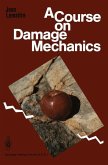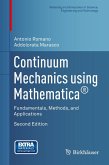Explosive Effects and Applications (eBook, PDF)
Redaktion: Zukas, Jonas A.; Walters, William
65,95 €
65,95 €
inkl. MwSt.
Sofort per Download lieferbar

33 °P sammeln
65,95 €
Als Download kaufen

65,95 €
inkl. MwSt.
Sofort per Download lieferbar

33 °P sammeln
Jetzt verschenken
Alle Infos zum eBook verschenken
65,95 €
inkl. MwSt.
Sofort per Download lieferbar
Alle Infos zum eBook verschenken

33 °P sammeln
Explosive Effects and Applications (eBook, PDF)
Redaktion: Zukas, Jonas A.; Walters, William
- Format: PDF
- Merkliste
- Auf die Merkliste
- Bewerten Bewerten
- Teilen
- Produkt teilen
- Produkterinnerung
- Produkterinnerung

Bitte loggen Sie sich zunächst in Ihr Kundenkonto ein oder registrieren Sie sich bei
bücher.de, um das eBook-Abo tolino select nutzen zu können.
Hier können Sie sich einloggen
Hier können Sie sich einloggen
Sie sind bereits eingeloggt. Klicken Sie auf 2. tolino select Abo, um fortzufahren.

Bitte loggen Sie sich zunächst in Ihr Kundenkonto ein oder registrieren Sie sich bei bücher.de, um das eBook-Abo tolino select nutzen zu können.
This is a broad-based text on the fundamentals of explosive behavior and the application of explosives in civil engineering, industrial processes, aerospace applications, and military uses.
- Geräte: PC
- ohne Kopierschutz
- eBook Hilfe
- Größe: 38.73MB
Andere Kunden interessierten sich auch für
![Spall Fracture (eBook, PDF) Spall Fracture (eBook, PDF)]() Tarabay AntounSpall Fracture (eBook, PDF)161,95 €
Tarabay AntounSpall Fracture (eBook, PDF)161,95 €![Continuous and Discontinuous Modelling of Cohesive-Frictional Materials (eBook, PDF) Continuous and Discontinuous Modelling of Cohesive-Frictional Materials (eBook, PDF)]() Continuous and Discontinuous Modelling of Cohesive-Frictional Materials (eBook, PDF)40,95 €
Continuous and Discontinuous Modelling of Cohesive-Frictional Materials (eBook, PDF)40,95 €![Time-Dependent Effects in Disordered Materials (eBook, PDF) Time-Dependent Effects in Disordered Materials (eBook, PDF)]() Time-Dependent Effects in Disordered Materials (eBook, PDF)40,95 €
Time-Dependent Effects in Disordered Materials (eBook, PDF)40,95 €![Crystalline Electric Field and Structural Effects in f-Electron Systems (eBook, PDF) Crystalline Electric Field and Structural Effects in f-Electron Systems (eBook, PDF)]() Crystalline Electric Field and Structural Effects in f-Electron Systems (eBook, PDF)73,95 €
Crystalline Electric Field and Structural Effects in f-Electron Systems (eBook, PDF)73,95 €![A Course on Damage Mechanics (eBook, PDF) A Course on Damage Mechanics (eBook, PDF)]() Jean LemaitreA Course on Damage Mechanics (eBook, PDF)65,95 €
Jean LemaitreA Course on Damage Mechanics (eBook, PDF)65,95 €![Continuum Mechanics using Mathematica® (eBook, PDF) Continuum Mechanics using Mathematica® (eBook, PDF)]() Antonio RomanoContinuum Mechanics using Mathematica® (eBook, PDF)53,95 €
Antonio RomanoContinuum Mechanics using Mathematica® (eBook, PDF)53,95 €![Shock Wave Science and Technology Reference Library, Vol. 3 (eBook, PDF) Shock Wave Science and Technology Reference Library, Vol. 3 (eBook, PDF)]() Shock Wave Science and Technology Reference Library, Vol. 3 (eBook, PDF)73,95 €
Shock Wave Science and Technology Reference Library, Vol. 3 (eBook, PDF)73,95 €-
-
-
This is a broad-based text on the fundamentals of explosive behavior and the application of explosives in civil engineering, industrial processes, aerospace applications, and military uses.
Dieser Download kann aus rechtlichen Gründen nur mit Rechnungsadresse in A, B, BG, CY, CZ, D, DK, EW, E, FIN, F, GR, HR, H, IRL, I, LT, L, LR, M, NL, PL, P, R, S, SLO, SK ausgeliefert werden.
Produktdetails
- Produktdetails
- Verlag: Springer New York
- Seitenzahl: 433
- Erscheinungstermin: 1. Dezember 2013
- Englisch
- ISBN-13: 9781461205890
- Artikelnr.: 44179463
- Verlag: Springer New York
- Seitenzahl: 433
- Erscheinungstermin: 1. Dezember 2013
- Englisch
- ISBN-13: 9781461205890
- Artikelnr.: 44179463
- Herstellerkennzeichnung Die Herstellerinformationen sind derzeit nicht verfügbar.
Jonas A. Zukas, Computational Mechanics Associates, Baltimore, MD, USA / William Walters, Army Research Laboratory, Aberdeen, MD, USA
1 Introduction to Explosives.- 1.1. History.- 1.2. Nomenclature.- 1.3. Blasting.- 1.4. Military Uses.- 1.5. Jet Penetrators.- 1.6. Reactive Armor.- 1.7. Explosive Welding.- 1.8. Wave Shaping and Lenses.- 1.9. Conclusions.- 1.10. Problems (Hints and Solutions).- References.- 2 Explosives Development and Fundamentals of Explosives Technology.- 2.1. Introduction.- 2.2. Nomenclature.- 2.3. The Nature of Explosions.- 2.4. What Are Explosives?.- 2.5. A Short History of Explosives.- 3 Shock Waves; Rarefaction Waves; Equations of State.- 3.1. Introduction.- 3.2. Notation and Units.- 3.3. List of Symbols.- 3.4. Shock Waves.- 3.5. Rarefaction Waves.- 3.6. Reference Frames.- 3.7. Sharp Shocks and Diffuse Rarefactions.- 3.8. Transmission and Reflection of Waves at Interfaces.- 3.9. The Shock Tube.- 3.10. Detonation.- 3.11. Phase Changes.- 3.12. Hydrodynamics and Thermodynamics.- 3.13. Equations of State.- 3.14. Equations of State for Mixtures.- 3.15. The Adiabatic Gamma, the Griineisen Gamma, and the Fundamental Derivative.- 3.16. Problems (Hints and Solutions).- References.- 4 Introduction to Detonation Physics.- 4.1. Nomenclature.- 4.2. The Simple Model.- 4.3. The Jump Equations.- 4.4. The Detonation ProductP-VIsentrope.- 4.5. Detonation Velocity and Density.- 4.6. TheC-JState.- 4.7. The Detonation ProductP-uHugoniot.- 4.8. Detonation Velocity and Charge Diameter.- 4.9. Conclusion.- References.- 5 The Chemistry of Explosives.- 5.1. Background.- 5.2. Conventional Explosives.- 5.3. Nitrate Esters.- 5.4. Nitroarenes.- 5.5. Nitroalkanes.- 5.6. Nitramines.- 5.7. Heterocyclic Explosives.- 5.8. Energetic Salts.- 5.9. Composite Explosives.- 5.10. Liquid Oxidizers and Explosives.- 5.11. Unconventional Explosives.- References.- 6 Theories and Techniques of Initiation.- 6.1Introduction.- 6.2 Nomenclature.- 6.3. Initiation Theories.- 6.4. Thermal Explosion Theory.- 6.5. Elementary Detonation Theory.- 6.6. Relationships Between Thermal and Shock Initiation Theories.- 6.7. Initiation Mechanisms.- 6.8. Initiation Trains.- 6.9. Conclusions.- References.- 7 The Gurney Model for Explosive Output for Driving Metal.- 7.1. Introduction.- 7.2. Nomenclature.- 7.3. Results of the Gurney Model.- 7.4. Applications of Gurney Analysis.- 7.5. Extensions of Gurney Analysis.- 7.6. Limitations and Corrections in Gurney Analysis.- 7.7. Combination of Gurney with Other Physics.- Acknowledgment.- References.- 8 Hazard Assessment of Explosives and Propellants.- 8.1. Introduction.- 8.2. Basic Precepts of Hazard Testing.- 8.3. Sensitiveness, Sensitivity, and Explosiveness.- 8.4. Stages in Hazard Assessment.- 8.5. Charge Hazard Tests.- 8.6. Electrostatic Sensitiveness.- 8.7. Assessment of the Results of the Tests on Energetic Materials.- 8.8. "Insensitive" High Explosives and Propellants.- 8.9. System or Weapon Tests for IM.- Acknowledgment.- References.- 9 Safe Handling of Explosives.- 9.1. Explosive Safety.- 9.2. Sensitivity Testing.- 9.3. Thermal Stability.- 9.4. Case History of an Ammonium Nitrate (AN) Emulsion Accident.- 9.5. Thermal Stability of Organic Explosives.- 9.6. Toxicity of Explosives.- References.- 10 Demolitions.- 10.1. Introduction.- 10.2. Explosively Formed Projectiles.- 10.3. Wall Breaching.- 10.4. Bridge Demolition.- 10.5. Explosive Ordnance Disposal.- References.
1 Introduction to Explosives.- 1.1. History.- 1.2. Nomenclature.- 1.3. Blasting.- 1.4. Military Uses.- 1.5. Jet Penetrators.- 1.6. Reactive Armor.- 1.7. Explosive Welding.- 1.8. Wave Shaping and Lenses.- 1.9. Conclusions.- 1.10. Problems (Hints and Solutions).- References.- 2 Explosives Development and Fundamentals of Explosives Technology.- 2.1. Introduction.- 2.2. Nomenclature.- 2.3. The Nature of Explosions.- 2.4. What Are Explosives?.- 2.5. A Short History of Explosives.- 3 Shock Waves; Rarefaction Waves; Equations of State.- 3.1. Introduction.- 3.2. Notation and Units.- 3.3. List of Symbols.- 3.4. Shock Waves.- 3.5. Rarefaction Waves.- 3.6. Reference Frames.- 3.7. Sharp Shocks and Diffuse Rarefactions.- 3.8. Transmission and Reflection of Waves at Interfaces.- 3.9. The Shock Tube.- 3.10. Detonation.- 3.11. Phase Changes.- 3.12. Hydrodynamics and Thermodynamics.- 3.13. Equations of State.- 3.14. Equations of State for Mixtures.- 3.15. The Adiabatic Gamma, the Griineisen Gamma, and the Fundamental Derivative.- 3.16. Problems (Hints and Solutions).- References.- 4 Introduction to Detonation Physics.- 4.1. Nomenclature.- 4.2. The Simple Model.- 4.3. The Jump Equations.- 4.4. The Detonation ProductP-VIsentrope.- 4.5. Detonation Velocity and Density.- 4.6. TheC-JState.- 4.7. The Detonation ProductP-uHugoniot.- 4.8. Detonation Velocity and Charge Diameter.- 4.9. Conclusion.- References.- 5 The Chemistry of Explosives.- 5.1. Background.- 5.2. Conventional Explosives.- 5.3. Nitrate Esters.- 5.4. Nitroarenes.- 5.5. Nitroalkanes.- 5.6. Nitramines.- 5.7. Heterocyclic Explosives.- 5.8. Energetic Salts.- 5.9. Composite Explosives.- 5.10. Liquid Oxidizers and Explosives.- 5.11. Unconventional Explosives.- References.- 6 Theories and Techniques of Initiation.- 6.1Introduction.- 6.2 Nomenclature.- 6.3. Initiation Theories.- 6.4. Thermal Explosion Theory.- 6.5. Elementary Detonation Theory.- 6.6. Relationships Between Thermal and Shock Initiation Theories.- 6.7. Initiation Mechanisms.- 6.8. Initiation Trains.- 6.9. Conclusions.- References.- 7 The Gurney Model for Explosive Output for Driving Metal.- 7.1. Introduction.- 7.2. Nomenclature.- 7.3. Results of the Gurney Model.- 7.4. Applications of Gurney Analysis.- 7.5. Extensions of Gurney Analysis.- 7.6. Limitations and Corrections in Gurney Analysis.- 7.7. Combination of Gurney with Other Physics.- Acknowledgment.- References.- 8 Hazard Assessment of Explosives and Propellants.- 8.1. Introduction.- 8.2. Basic Precepts of Hazard Testing.- 8.3. Sensitiveness, Sensitivity, and Explosiveness.- 8.4. Stages in Hazard Assessment.- 8.5. Charge Hazard Tests.- 8.6. Electrostatic Sensitiveness.- 8.7. Assessment of the Results of the Tests on Energetic Materials.- 8.8. "Insensitive" High Explosives and Propellants.- 8.9. System or Weapon Tests for IM.- Acknowledgment.- References.- 9 Safe Handling of Explosives.- 9.1. Explosive Safety.- 9.2. Sensitivity Testing.- 9.3. Thermal Stability.- 9.4. Case History of an Ammonium Nitrate (AN) Emulsion Accident.- 9.5. Thermal Stability of Organic Explosives.- 9.6. Toxicity of Explosives.- References.- 10 Demolitions.- 10.1. Introduction.- 10.2. Explosively Formed Projectiles.- 10.3. Wall Breaching.- 10.4. Bridge Demolition.- 10.5. Explosive Ordnance Disposal.- References.







